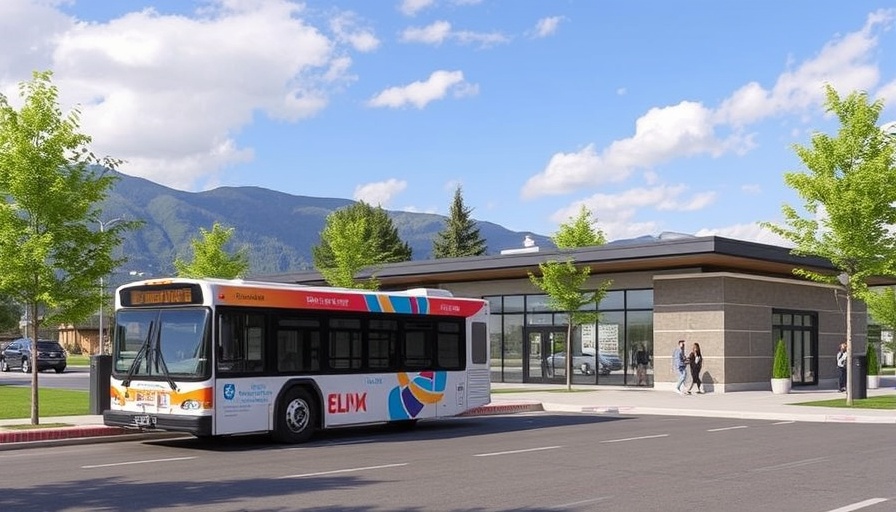
Transforming Kelowna's Transit Infrastructure for a Better Community
The City of Kelowna is making strides to modernize its transit facility, a much-needed upgrade that underscores the city’s commitment to enhancing public transportation. The expansion of the transit facility, originally built 27 years ago, aims to support the growing demand for efficient transit options as the population expands.
A Vision for Expansion
With a $9 million investment, the upgrades to the Hardy Street facility are set to transform it into a more capable hub. Originally designed to house 70 buses, the facility will soon accommodate 125, along with the necessary infrastructure for electric buses. This is an important step toward creating a more sustainable future for public transport in Kelowna.
Plans in Motion Since 2023
City planners began their extensive planning process in February 2023, highlighting their foresight in anticipating increased public transport needs. The city council’s approval of the formal rezoning in October 2024 was another key milestone, paving the way for the upcoming developments. Now, with the acceptance of various development permits, the familiar landscape of Hardy Street is on the verge of a significant transformation.
Impact on the Community
This expansion isn’t just about increasing capacity—it’s about enhancing the overall commuter experience. Improved maintenance and bus wash functions will ensure that buses remain efficient and less prone to delays, making public transport a reliable choice for residents. For homeowners and families across Kelowna, these upgrades promise a smoother, more dependable commuting experience.
Looking to the Future
In addition to the upgrades at Hardy Street, the city has ambitious plans for a new transit facility near Highway 97, projected to open by 2030. This long-term vision aims to further bolster public transport capacity to 240 buses by 2045, reflecting the city’s proactive approach to accommodating future growth.
Financial Insights
While the exact costs for the new facility remain to be determined, various funding sources, including BC Transit, are expected to reveal crucial financial details in the coming months. Understanding these financial aspects will be paramount for community members interested in how their tax dollars are being utilized for public services like transit.
Join the Conversation
The enhancements to Kelowna’s transit system reflect the city’s commitment to evolving alongside its community. As these developments progress, residents are encouraged to share their thoughts and opinions on the improvements. Engaging with local media and city officials can amplify community voices and help shape future transit initiatives.
In a world where convenient public transport remains vital for urban life, these upgrades signify a substantial shift towards sustainability and community-oriented infrastructure. Homeowners in Kelowna can look forward to these changes, knowing that their needs for a functional and efficient transit system are being prioritized.
Call To Action
If you appreciate the coverage of local initiatives that impact your community, consider supporting independent news platforms like KelownaNow. Subscribe to the daily newsletter to stay informed about important developments that shape your neighborhood, including the ongoing upgrades to the transit system.
 Add Row
Add Row  Add
Add 




Write A Comment